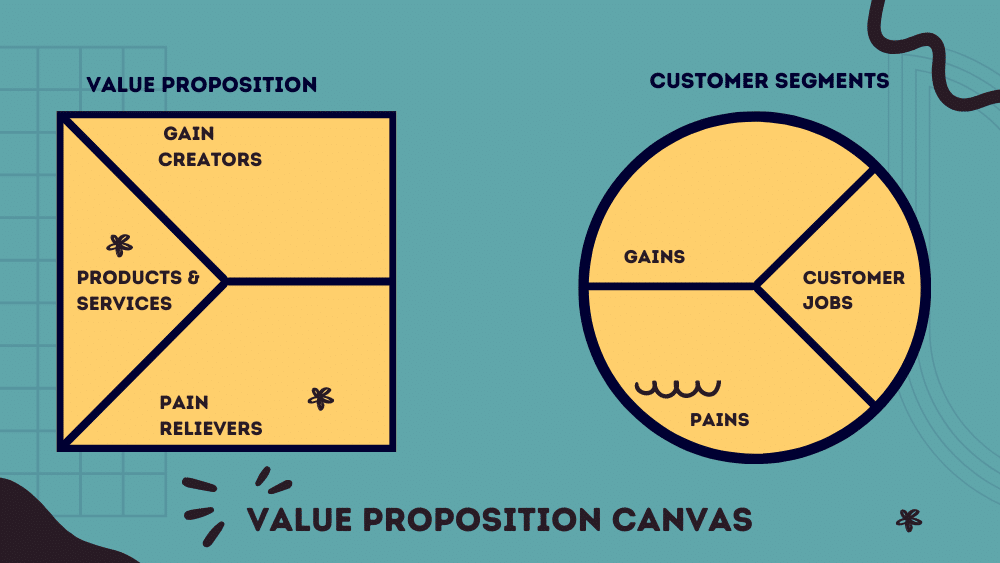A value proposition is a statement that describes the unique benefits and advantages that a product or service offers to its target customers. It is a critical component of any business or organization’s marketing strategy, as it defines the value that the business provides to its customers and sets it apart from competitors.
A well-crafted value proposition should be clear, concise, and compelling. It should communicate the key benefits of the product or service in a way that resonates with the target audience and explains why they should choose it over other options.
The key elements of a value proposition include:

- Target Customer: A value proposition should clearly define the target customer for the product or service. This includes demographic information, such as age, gender, location, and income, as well as psychographic information, such as interests, values, and behavior.
- Pain Points: A value proposition should identify the pain points or problems that the target customer is facing. This includes both tangible issues, such as a need for a specific product or service, as well as intangible problems, such as a desire for a certain lifestyle or status.
- Unique Benefits: A value proposition should clearly communicate the unique benefits and advantages of the product or service to the target customer. This includes both functional benefits, such as features and performance, as well as emotional benefits, such as status, identity, or connection.
- Differentiation: A value proposition should explain how the product or service is different from competitors, and why the target customer should choose it over other options. This can include factors such as price, quality, convenience, innovation, or customer service.
- Proof Points: A value proposition should provide proof points or evidence that support the unique benefits and differentiation of the product or service. This can include customer testimonials, case studies, data, or other forms of social proof.
Examples of a Value Proposition
An effective value proposition should be customer-focused and benefit-driven. It should communicate the value that the product or service provides to the customer, and explain why they should choose it over other options. Some examples of effective value propositions include:
- Apple: “Think different.” Apple’s value proposition focuses on innovation and creativity and appeals to customers who want to stand out and be different from the mainstream.
- Uber: “Get there. Your day belongs to you.” Uber’s value proposition emphasizes convenience and freedom and appeals to customers who value time and flexibility.
- Airbnb: “Belong anywhere.” Airbnb’s value proposition focuses on unique experiences and connections and appeals to customers who want to travel like a local and feel like they belong.
Value Proposition Canvas

The Value Proposition Canvas is a tool that helps businesses and organizations to identify and articulate the unique value that their products or services offer to their customers. It is a visual framework that helps to align the customer’s needs with the value that the business provides, and to identify areas for improvement.
The Value Proposition Canvas consists of two parts: the Customer Profile and the Value Map.
The Customer Profile describes the customer segments that the business is targeting, and their needs, pains, and gains. It helps the business to understand the specific challenges and opportunities that their customers face and to develop solutions that address these needs.
The Value Map describes the products or services that the business offers, and how they create value for the customer. It helps the business to identify the key features, benefits, and advantages of their products or services, and to communicate this value to their target customers.
How to create Value Proposition Canvas
To create a Value Proposition Canvas, follow these steps:
- Identify the Customer Segments: Start by identifying the specific customer segments that your business is targeting. This can include demographic information, such as age, gender, income, and location, as well as psychographic information, such as values, interests, and behavior.
- Identify the Customer Needs: Identify the specific needs and problems that your target customers face. This can include functional needs, such as a need for a specific product or service, as well as emotional needs, such as a need for status, recognition, or connection.
- Identify the Customer Pains: Identify the specific pain points or challenges that your target customers face. This can include frustrations, obstacles, or negative experiences that they encounter in their daily lives.
- Identify the Customer Gains: Identify the specific gains or benefits that your target customers are seeking. This can include positive experiences, opportunities, or improvements that they hope to achieve.
- Create the Value Map: Identify the specific features, benefits, and advantages of your products or services that address the customer needs, pains, and gains. This can include functional features, such as performance, quality, and convenience, as well as emotional benefits, such as status, identity, or connection.
- Align the Value Map with the Customer Profile: Use the Value Proposition Canvas to align the customer needs, pains, and gains with the value that your products or services provided. This helps to identify areas of alignment and areas for improvement.
- Iterate and Refine: Use the Value Proposition Canvas to iterate and refine your value proposition over time. This can include testing new product features, refining your marketing messaging, or targeting new customer segments.
The Value Proposition Canvas is a powerful tool that can help businesses and organizations to develop a clear and compelling value proposition that resonates with their target customers. By understanding the specific needs, pains, and gains of their customers, and aligning their value proposition with these needs, businesses can create products and services that meet the needs of their customers and achieve long-term success.
Conclusion
In summary, a value proposition is a critical component of any business or organization’s marketing strategy. It defines the unique benefits and advantages that a product or service provides to its target customers and sets it apart from competitors. A well-crafted value proposition should be customer-focused, benefit-driven, and communicate the value that the product or service provides to the customer.
